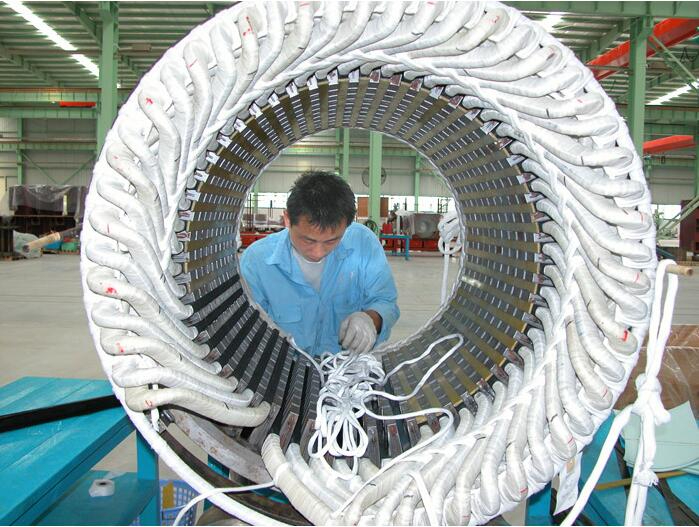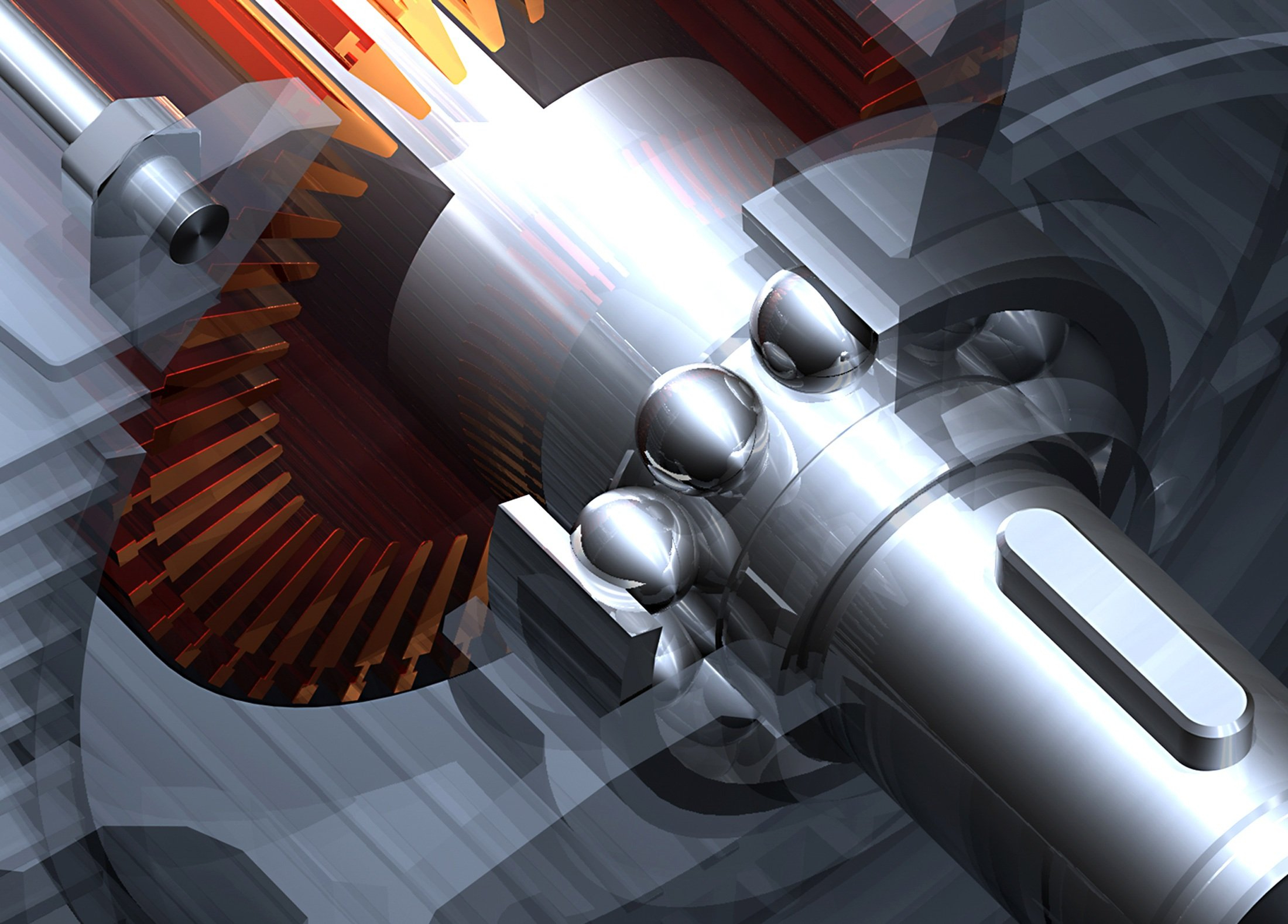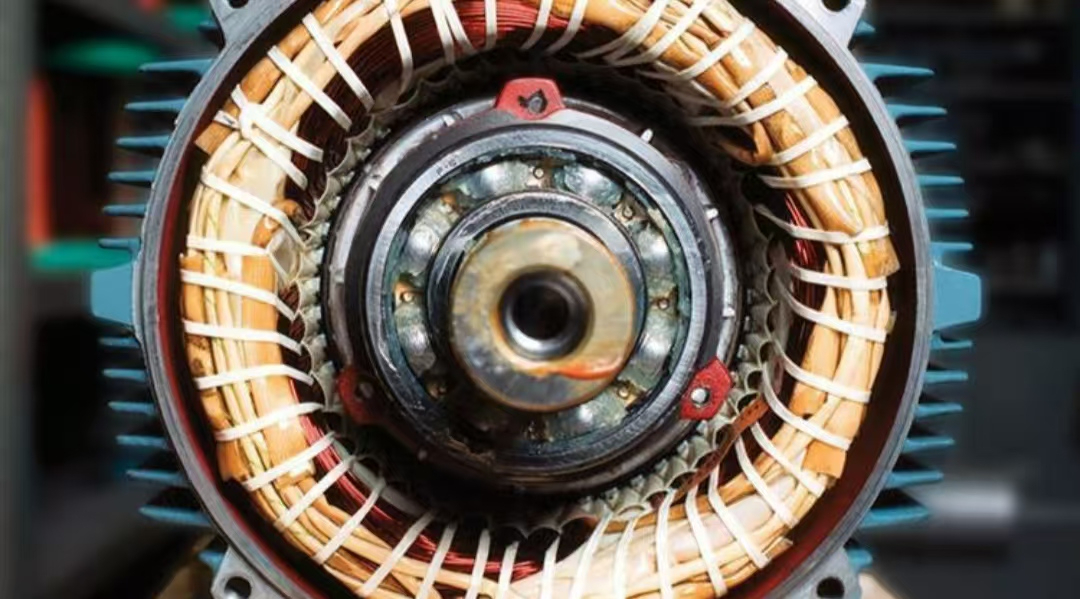The nameplate information is standardized and common among the manufacturers. This helps installation and maintenance personnel to quickly understand and recognize exactly what type of motor they're dealing with during a new installation or replacement procedure.
The following details are typically included in the nameplate of an electric motor:
Manufacturer's Name
Rated volts
Rated amps
Frequency
Number of phases
Full-load speed/RPM
Duty. Time rating
Insulation system class
Maximum ambient temperature
kW or rated horsepower
Torque
Locked rotor indicating code letter
Power Factor
Service Factor
Efficiency
Frame Size
Design Code
Enclosure Type
Rated volts. Voltage
This data shows at which voltage is the motor is designed to operate most efficiently. Motors are designed to operate at +/-10% tolerance of this value.
Amps or Full load Amp rating
Full load amperage is the amount of current the motor is expected to draw under full load conditions. As the torque load on a motor increases, the amperage will also increase. When the full load torque and horsepower are reached the corresponding amperage is told to be the full load amperage (FLA).
Wirings, starter, circuit breaker and thermal overloads should be sized upon the full load amperage rating
Frequency/Hertz
The frequency for which the motor is designed, it is directly related to the motor’s speed. Hertz is measured in cycles per second. The most common frequencies are 50Hz and 60Hz.
If more than one frequency is marked on the nameplate, than other parameters that will differ at the corresponding input frequency are noted also.
Number of phases
Shows the type of power supply for which the motor is designed. There are single phase and three phase motors.
Full-load speed
The full-load speed is the speed at which full-load torque is delivered for the rated voltage and frequency. Usually it is shown in rounds per minute (RPM), sometimes called slip-speed or actual rotor speed. The difference of the full load speed and the synchronous speed is called slip (an induction motor’s speed is always less than synchronous speed and it drops off as loads increases). The motor’s slip is determined by it’s design and for the most of the induction motors the full load speed can be between 96% and 99% of the no load speed.
Synchronous speed is the theoretical speed of a motor based on the rotating magnetic field. This is shown in the following equation:
S = (120*F) / P
S = speed in rpm
F = Frequency in Hz
P = Number of poles in motor
Insulation system class
The highest temperature in the motor’s hottest spot has a serious impact on the life of the electric motor. The temperature that occurs at that spot is a combination of motor design temperature and the ambient temperature. The insulation class shows the motor’s ability to withstand temperatures over time.
The motors have different insulation capabilities. The insulation codes show their thermal capabilities. The higher the designated code letter, the greater the heat capability.
IEC and NEMA use the same classification system for winding insulation. It is based on the highest temperature the material can withstand continuously without degrading or reducing motor life. (Note: NEMA does not have a Class E.)
Temperature Classes are:
- Class A - 105 °C (221 °F).
- Class E - 120 °C (248 °F).
- Class B - 130 °C (266 °F).
- Class F - 155 °C (311 °F).
-
Class H - 180 °C (356 °F).
Maximum ambient temperature
The maximum ambient temperature (AMB) lists the temperature at which the motor can operate and still be within the tolerance of the insulation class at the maximum temperature rise.
Duty. Time rating
Most motors are rated for continuous duty.
According to NEMA, typically “duty cycle” is referred to in one of two terms: continuous or intermittent.
IEC breaks it into ten ratings:
S1 - Continuous duty
The motor works at constant load for enough time to reach temperature equilibrium.
S2 - Short-time duty
The motor works at constant load, but not long enough to reach temperature equilibrium, and rest periods are long enough for the motor to reach ambient temperature.
S3 - Intermittent periodic duty
Sequential, identical run and rest cycles with constant load. Temperature equilibrium is never reached. Starting current has little effect on temperature rise.
S4 - Intermittent periodic duty with starting
Sequential, identical start, run, and rest cycles with constant load. Temperature equilibrium is not reached, but starting current affects temperature rise.
S5 - Intermittent periodic duty with electric braking Sequential, identical cycles of starting, running at constant load, electric braking, and rest. Temperature equilibrium is not reached.
S6 - Continuous operation with intermittent load
Sequential, identical cycles of running with constant load and running with no load. No rest period.
S7 - Continuous operation with electric braking
Sequential, identical cycles of starting, running at constant load, and electric braking. No rest period.
S8 - Continuous operation with periodic changes in load and speed
Sequential, identical duty cycles of start, run at constant load and given speed, then run at other constant loads and speeds. No rest.
kW or Horsepower
According to its definition watt is a unit of electrical power measurement based on amperes and volts (an input unit), while a HP is a power measurement based on mechanical work (an output unit). By definition, a horsepower equals the power to lift 33,000 lbs, 1 ft in 1 minute. In electric motors, watts and HP compare because watts are also used as output units. This parameter is an expression of the motor’s mechanical output rating - the ability to deliver the torque needed for the load at rated speed.
IEC uses kilowatts, NEMA uses horsepower.
Torque
Torque is the turning or twisting force supplied to the load, measured in inch pounds or foot-pounds. Torque and horsepower are related:
HP = (Torque*Speed)/Constant
If Torque is given in ft-lbs the constant is 5252
If in in-lbs the constant is 63,025
Locked rotor indicating code letter
When AC motors are started with full voltage applied, they create an inrush current that is usually times greater than the value of full load current, the motor can draw a line amperage 300% to 600% greater than their full load running current. The magnitude of the inrush current (locked rotor amps - LRA) is determined by motor horsepower and design characteristics.
To define inrush characteristics and present them in a simplified form, code letters are used.
Code letters group motors depending on the range of inrush values and express the inrush in terms of KVA (Kilovolt Amperes). By using the Kilovolt ampere basis, a single letter can be used to define both the low and high voltage inrush values on motors.
The value of this current can be important on some installations because it can cause a voltage drop that might affect other equipment.
There are two ways to find out these values:
- From the locked rotor code letter that defines the inrush current required by the motor during start.
- From the motor performance data sheet provided by the manufacturer.
To determine starting inrush amperes from the code letter, the code letter value (usually the mid-range value is adequate), horsepower and rated operating voltage are inserted in the appropriate equation. The equation to be used is determined by whether the motor is single or three phase.
INRUSH AMPERES(SINGLE PHASE MOTORS)
= ((CODE LETTER VALUE) x HP x 1000)/(RATED VOLTAGE)
INRUSH AMPERES(THREE PHASE MOTORS)
= ((CODE LETTER VALUE) x HP X 577)/(RATED VOLTAGE)
Power Factor (PF)
Power factor on the nameplate is sometimes shown as PF, P.F. or cos, it is the ration of active power W and apparent power VA in %. The power factor is also equal to the cosine (cos) of the angle formed by the lag between the current with respect to the voltage.
For induction motors the power factor varies with load, it increases as additional load is applied to the motor. It can vary from 0 to 1.
Service Factor (SF)
Indicates the amount of overload a motor can handle. Electrical motors are often designed to handle a temporary increase in demand, the ability of the motor to handle these demands are represented by the service factor.
For example, a motor with 1.0 service factor cannot be expected to handle more than its nameplate kW. A motor with service factor 1.15 can be expected to safely handle infrequent loads to 15% past it’s rated kW.
In general it is bad practice to size motors to operate continuously above rated load in the service factor area. Operating a motor at overloads allowed by the service factor for extended periods can result in reduced speed, overheating, decreased efficiency, decreased power factor which affects the overall life span of the motor.
Efficiency
The percentage of the input power that is actually converted to work output from the motor shaft. The motor have a “nominal” efficiency shown on the plate, this is the average efficiency. The closer this value is to 100%, the lower the electricity consumption cost is going to be.
Frame Size
The frame size determines the mounting dimensions such as the foot openings pattern and the shaft height.
Number and a letter are used to provide the information.
The dimension of the electric motor based on the NEMA system for fractional hp motors (micro motors) have two digits and represent the shaft height from the base’s bottom in sixteenths of one inch. For large motors the frame size has three digits, the first two digits stand for the shaft height in one quarter of an inch. The third digit is the bolt mounting holes dimension, the longer the motor body, the longer the distance between mounting bolt holes in the base. The letter is the type of frame.
In IEC type motors (metric motors) is applied the same concept but the height is in millimeters instead of inches.
Design Code
The Design Code or design letter covers the characteristic of a torque and current of the motor. Design letters (A, B, C or D) represent the different categories. Most of the motors have A or B design.
When replacing a motor it is important to check the design letter.
- Design A motors apply to applications with high breakdown torque.
- Design B motors are used for general purpose applications.
- Design C motors are used for applications with high starting torque.
-
Design D motors for cycling loads and powering hoists.
Enclosure Type
The enclosure type shows how well the motor is protected from the environment.
This is the area where IEC standards get very specific. “Open drip-proof” and “totally enclosed” are the descriptive words NEMA uses.
The most common enclosures are:
Open Drip Proof (ODP)
Totally Enclosed Fan Cooled (TEFC)
Totally Enclosed Non-Ventilated (TENV)
Totally Enclosed Air Over (TEAO)
Totally Enclosed Wash Down (TEWD)
Totally Enclosed Hostile and Severe Environment
Explosion Proof Enclosures (EXPL)
Hazardous Locations (HAZ)
For most industrial applications, IP 22 relates to open drip-proof motors, IP 44 or IP 54 to totally enclosed (like NEMA 12), IP 45 to weatherproof, and IP 55 to washdown -duty motors.
References
International Electrotechnical Commission (IEC) www.iec.ch
National Electrical Manufacturers Association (NEMA) www.nema.org



